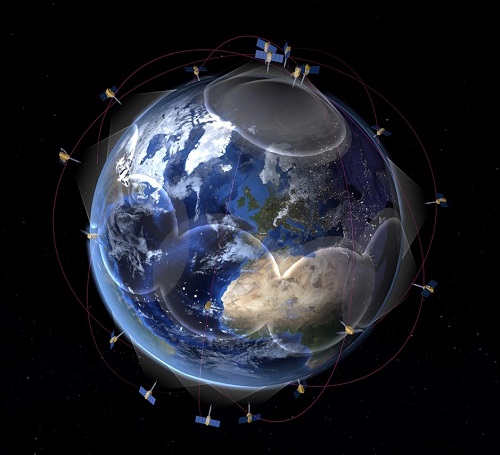If you had to describe Argos in two words, what it would be? According to Michel Sarthou, Chief Technical Officer at Kinéis, former Head of Argos space segment at CNES (French Space Agency) it would be: “Success Story”.
Many may not know this but the first Space IoT was actually the Argos system deployed back in the 80’s! Today, using 40+ years of experience, Kinéis is carrying the metamorphosis of the Argos System.
With a team of 50 people, together, they are taking up the challenge of launching 25 nanosatellites by the end of 2023. We were granted a backstage pass to interview Michel Sarthou. He explains how this new constellation will re-invent the Argos system and what it means for the scientific community.
Michel Sarthou took over as Technical Director of Kinéis in 2019 after having been Project Manager for Argos, the IoT space mission on which Kinéis is based, at CNES for nearly 15 years. He joined CNES in 1990 where he successively worked on radio-frequency R&D, the ROSETTA – PHILAE project with ESA and DLR. ROSETTA – PHILAE project was the first mission to “Rendezvous with a comet”, the first to follow a comet on its orbit around the Sun, and the first to deploy a lander to a comet’s surface. Michel Sarthou also worked for the Cospas-Sarsat search and rescue program.
Michel, as Technical Director, what is your role in setting up the constellation?
With my team, we oversee setting up the Kinéis infrastructure that will support the Kinéis mission. The infrastructure can be split into two parts the Space segment and the Ground Segment.
The Space Segment includes the satellites and payloads and the Ground Segment includes the station network, the mission center, the command control center and the service center which processes and distributes the data.
So, the main goal of our department is setting all this up but also guaranteeing that the program is what we call “technically coherent” and validating the system.
You were part of Argos’ story for 15 years, how is this new constellation unique?
There are three things that set the constellation apart: technology, time & cost.
In terms of technology, it’s a constellation of 25 nanosatellites. Generally, nanosats are used for demo missions but we’re making a fully operational constellation with them! All our satellites are perfectly controlled in orbit thanks to propulsion embarked on-board.
Time-wise, the constellation is going to be operational in a very short amount of time. We started in 2019 and we’re launching in 2023. That’s 4 years with a limited budget, which brings me to the third point, cost.
We raised 100 million euros for this constellation, that’s how much we have to set this up. To put it into context, the Galileo constellation took more than 10 years and 10 billion euros. What we’re doing is almost unheard of, it goes outside the box and we’re constantly innovating
 Impressive! As we all know, the first nanosat ANGELS, a prototype of the future Kinéis Nanosat, has already been launched, what are the next steps for the future constellation?
Impressive! As we all know, the first nanosat ANGELS, a prototype of the future Kinéis Nanosat, has already been launched, what are the next steps for the future constellation?
We have just passed what we call the preliminary design phase of the project, which means we have set up the system’s architecture, produced the set of detailed requirements for each system component which have started their development (hardware and software).
Throughout this year we will start compatibility tests between these different components.
At the end of 2021, we have important and detailed reviews to make sure everyone is on schedule and everything is working correctly. From there, we’ll validate the whole concept making us ready for the flight models.
2022 will be dedicated to the flight models. We want to have everything ready by the end of 2022 so that we can launch in 2023.
We plan to launch the first 5 satellites at the end of March 2023 and the remaining 20 by the end of 2023
What will this new constellation placing into orbit 25 brand new Argos instruments bring compared to the current one & how will this benefit the scientific community in particular?
The scientific community will have access to near real-time data at a much lower cost than what we offer today. Two factors that are essential for environmental projects today.
Compared to the current constellation, this new one is far better in terms of performance. The constellation will have 3 times more sats than those currently in orbit so a major improvement is the revisit time which will be 15 minutes (near real-time) instead of the current 1.5-2 hours with more coverage in places.
So, better performance but also cheaper technology. With the chipsets now available to integrators, beacons can cost up to ten times less that what they cost today.
2023 is just around the corner, we encourage all scientific users of Argos to think about all the possibilities that the revolutionized Argos system will provide, think how they can re-think the way of studying wildlife, oceans, rivers and lakes at a completely brand new level!
We do hope that this new constellation will help the international community in Earth data collection. CLS, our parent company gave us the mission to succeed in this scientific and technological revolution and is there to help Argos users and future Argos users adopting the technology and better study, understand and protect our planet. That always has been the mission of Argos and still is more than ever.



